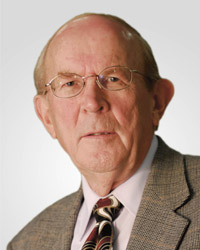
INDIA - Enduring Friendship with Russia
Indian Prime Minister Narendra Modi [went to] Moscow for a two-day visit with Russian President Vladimir Putin—his first trip to Russia since the Kremlin ordered its full-scale invasion of Ukraine more than two years ago.
Yet there are few signs Modi, the leader of the world’s largest democracy, plans to challenge Putin directly over his actions in Ukraine. Instead, the Indian leader appears to be engaging Moscow as part of a wider balancing act between East and West that has been at the core of his foreign policy.
In a partnership that often blurred ideological lines, the Soviets provided weapons to India as both countries found a common threat in the rise of their neighbor China.
Fast forward to today and much has changed: The United States is now one of India’s major partners and India’s military needs have diversified. Yet Modi’s Moscow visit is part tribute to an enduring Indian-Russian friendship, analysts say.
Meanwhile, New Delhi has grown increasingly alarmed as Western sanctions have pushed Russia into the arms of India’s key regional rival China, regional exports say.
Further complicating the picture: New Delhi has also benefited from purchases of Russian oil at steep discounts after the U.S. and its allies imposed sanctions on Russian crude.
Meanwhile, easing the way for more Russian-Indian business—and adjusting a massive trade imbalance that has come with Russia’s oil exports—appears at the heart of [the] talks.
-www.npr.org, 8 July 2024
Arno's Commentary
From an economic perspective, India is still a developing country. Nevertheless, according to WorldPopulationReview.com, they place fifth in the world, with a 2.9% share of global manufacturing. China has 31.6%, the USA 15.9%, Japan 5.5%, and Germany 4.8%.
Healthwise, India has a bad report card, with life expectancy at only 68.2 years, and infant mortality at 30.4 per 1,000 live births. This seems to be attributed to a physician density of only 0.74 physicians and 0.5 beds per 1,000 population.
Russia, on the other hand, has an average life expectancy of 72.3, years and infant mortality at 6.5 per 1,000 live births. Physicians are 3.82, and beds 7.1 per 1,000 population.
When checking import and export figures according to the CIA Factbook, exports are $773 billion, and imports $859 billion (2023 est.).
Obviously, that all will change in the not-too-distant future. Based on Info.org, under “World Economic Outlook Growth Projections,” India is listed at 6.8%, Russia 3.2%.
Regarding Christians, CBN.com reports: “300,000-Member Indian Church to Plant 40 More Megachurches.” Below is an excerpt from the article.
As church volunteers coordinate traffic, shuttle buses, auto rickshaws, and motorcycles ferry thousands of people, all trying to get here two hours ahead of Calvary’s first of five services that begin at 6 a.m.
By sunrise, the faithful have taken their seats.
The main sanctuary holds 18,000 people supported by adjacent Bethlehem Hall with 15,000 and a third structure accommodating more than 3,000 more.
Calvary Temple started in 2005 with about two dozen people. Today, it boasts more than 300,000 members making it one of the largest churches in the world.
They have 11 satellite churches with plans for more nationwide expansion.
-www.cbn.com, 28 June 2024
While the CIA Factbook reports only 2.3% of India is Christian (all denominations combined), the number is nevertheless impressive: 32.4 million people.
In summary, India and Russia are a very unlikely couple, with very little if any chance to impact the global economy. Yet church growth is the good news. We are reminded here again of Jesus’ words, “I will build my church”—and that the Lord is doing until the fullness of the Gentiles has come in.
For monthly updates on Midnight Call missionary activity in India, contact ishmael.john@gmail.com to receive Brother Ismael’s newsletter.



